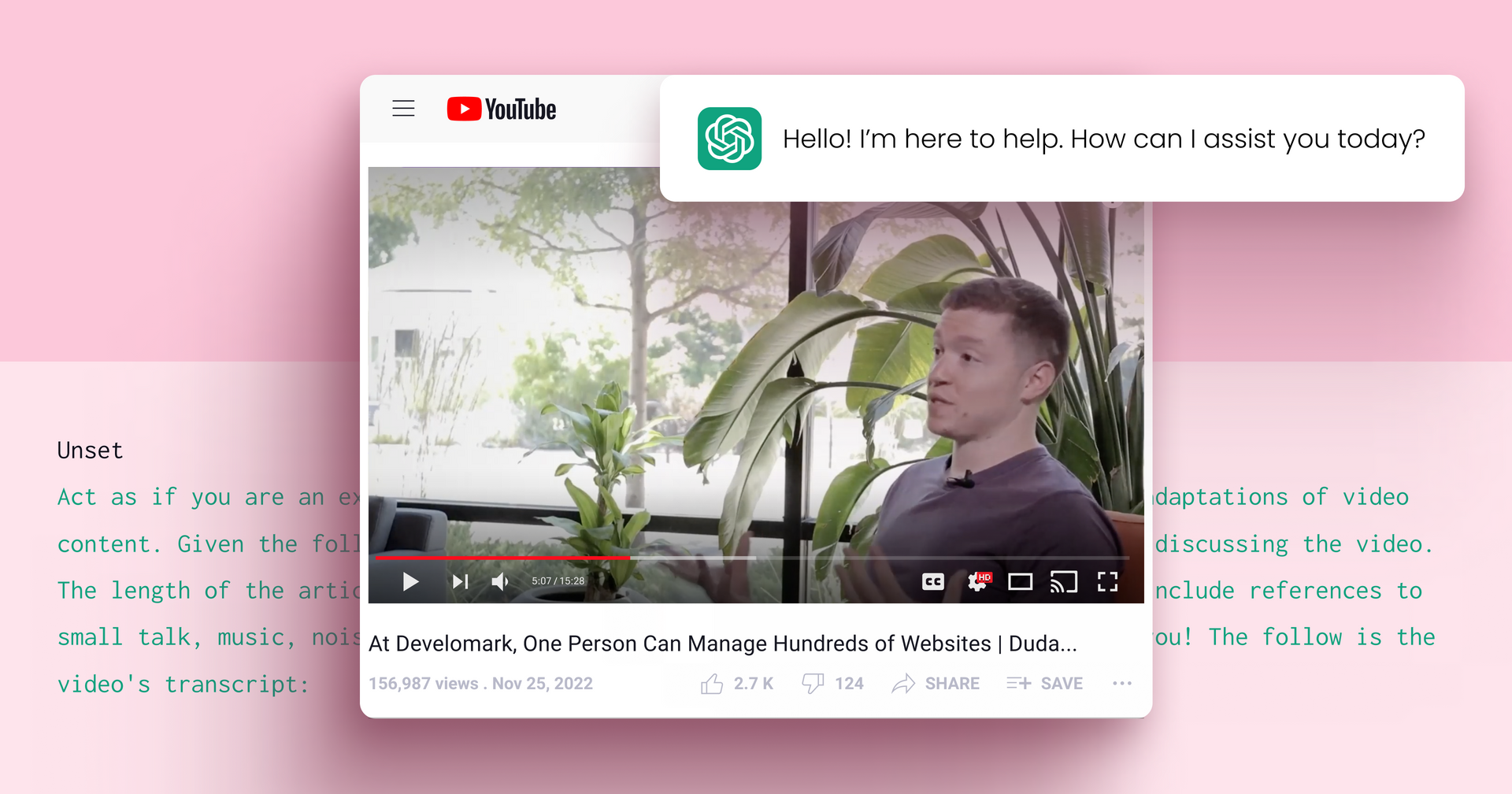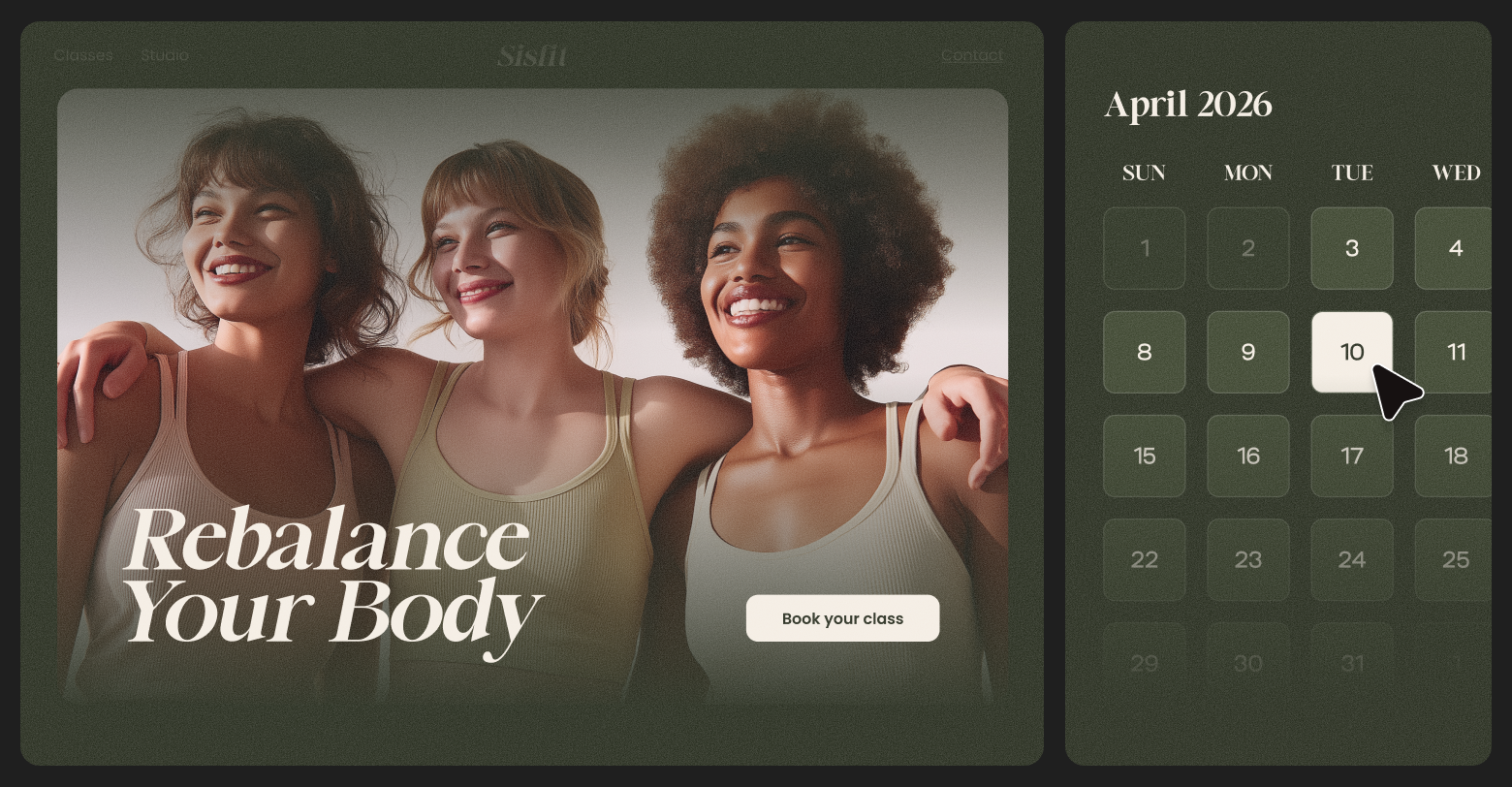We produce a lot of videos. They serve many different purposes, such as marketing
case studies or educational
webinars, yet all have one thing in common—effort. If you’ve ever created video content for your clients, or even your own
agency, then surely you can relate. Even the simplest video takes planning, coordination, and thoughtful execution if you want it to become something that your audience will actually enjoy watching.
This effort is an investment, and your investments should pay dividends. In other words, your videos deserve a second life.
The value of repurposing content
Consider all of the channels your agency creates content for. At Duda, we produce organic content for social media, video streaming services, emails, and our own website alongside paid advertising, long-form PDFs, and more. With so many different formats across so many unique channels, we’d need to create a ton of content if we wanted it all to be unique.
Instead, we often repurpose our content. Long-form eBooks, for example, can be divided into multiple blog posts, which can be further distilled into even more concise social media posts. We can then share this content on our website, gate it behind PPC ads, include it in an email newsletter, or share it via social media. This strategy applies to video as well.
We recently published a blog post titled “Mastering Multi-Product Strategies For Vertical SaaS,” which was repurposed from our SaaS-oriented panel discussion, “How to Build a Winning Multi-Product Strategy & Conquer Your Niche.” By presenting this video in a different medium, in this case text, we’re making valuable information more accessible to a much wider audience.
However, adapting an article from a video is much more work than adapting an article from an eBook. The author will need to watch the video, take notes, then write this new piece entirely from scratch. Sure, they’ve dodged the research and ideation phase of writing an article, but this process still takes quite a bit of time.
Thankfully, that’s where
AI can help.
Transforming video content with AI
Artificial intelligence tools, like
Bard or
ChatGPT, can dramatically simplify the process of repurposing video content. All you need is a script (or transcript) and the following prompt:
Let’s break down what’s happening here. If you’ve already seen our article on
AI Prompts for Agencies then you may already know that, according to experts at
Harvard, starting with the phrase “Act as if…” often improves the quality of a prompt’s output. That’s because AI tools perform better when you’re specific and explicit in your prompting.
With a role defined, we then limit the length of our article, focus the content, then paste our script/transcript. Depending on the length of your video, this may require multiple prompts or a subscription to premium tools like ChatGPT Plus.
Here’s an example of the prompt in action. We recently interviewed Ruan from Develomark to discuss how his agency is using Duda to grow. Since this was an interview, there isn’t a script available to feed into our prompt. Instead, we chose to use the generated transcript that YouTube provides.
You can find this transcript by clicking on the description of the video, scrolling down, then selecting “Show Transcript.” From there, the transcript can be copied and pasted into your prompt. Keep in mind that these transcripts are not perfect. This example had misspelled Ruan’s name as well as the name of his agency. Correcting these errors before running the prompt is essential. If your video has a script, that’s even better.
You can see how
ChatGPT responded as well as how
Bard responded to this prompt via these shared chat logs. While I personally prefer ChatGPT’s response, Bard provided multiple drafts out of the gate to choose from. Both tools were equally effective.
It’s important to edit and review any article you generate with AI for accuracy, especially when the article discusses real people like this example does. Discussing real people is a very easy way to
induce hallucinations.
That’s it! This is an easy, time-saving way to breathe new life into your existing video content. We used this exact strategy, to great success, in our blog article, “Strategies For Robust Agency Revenue Growth In The Digital Age.” This particular article is a great example of how this prompt can scale to work with much larger videos—in this case an hour webinar.







